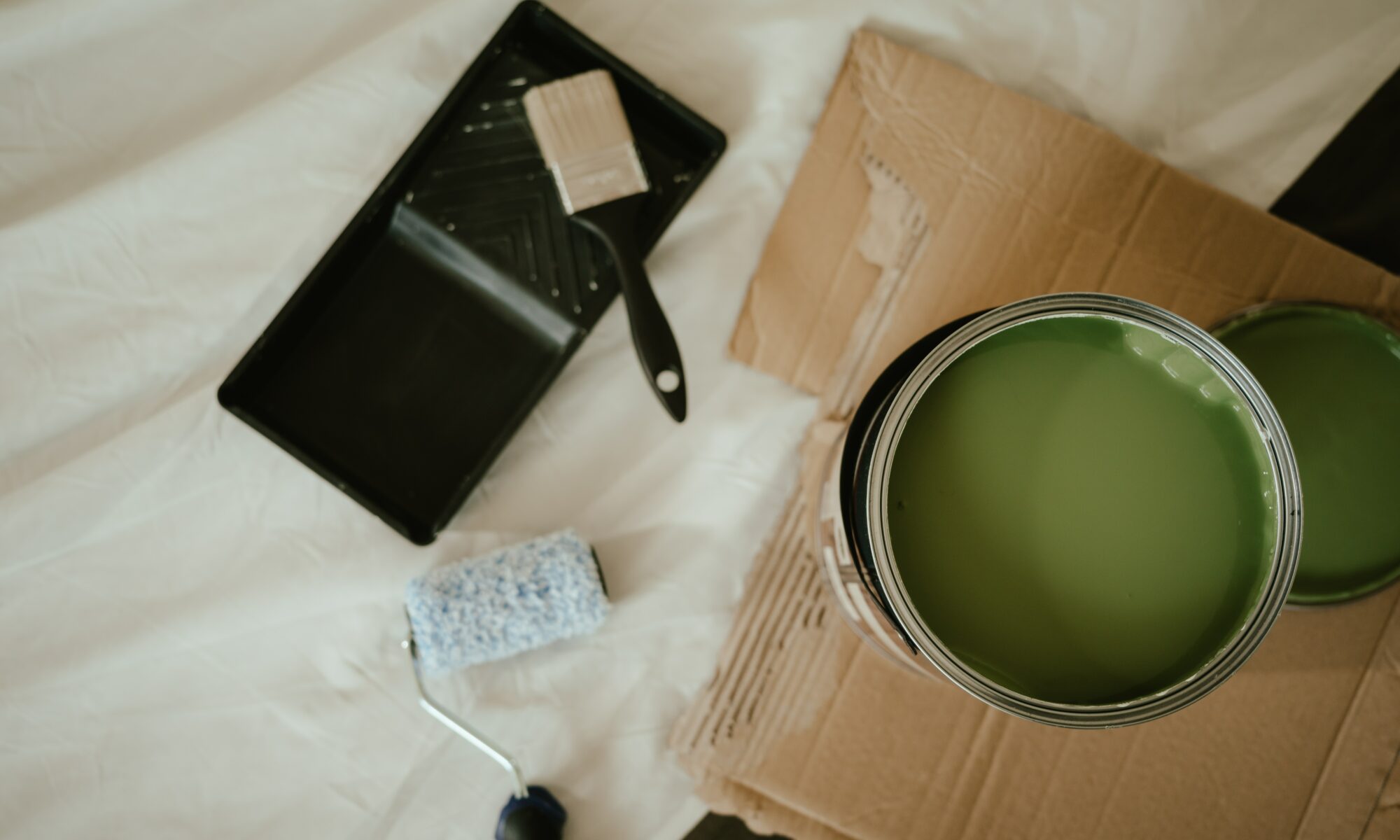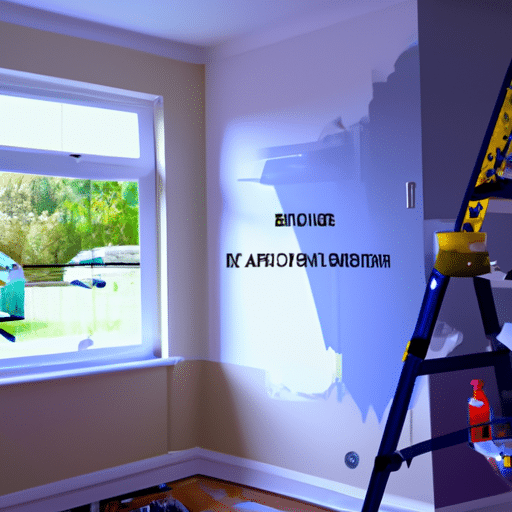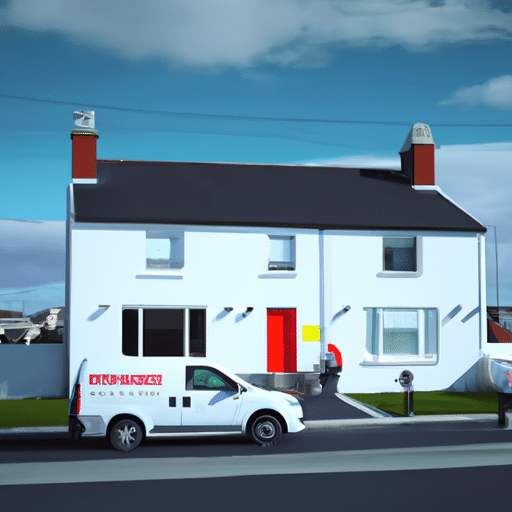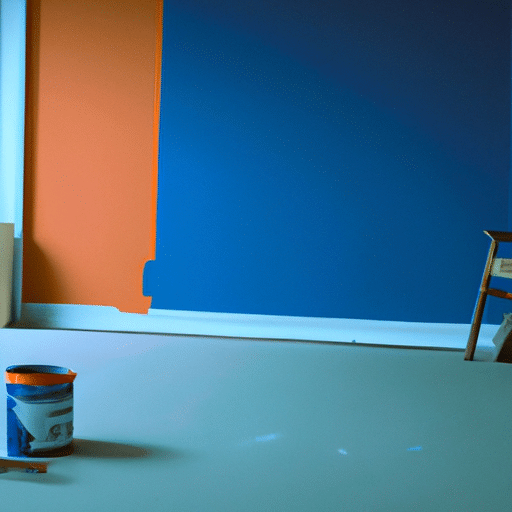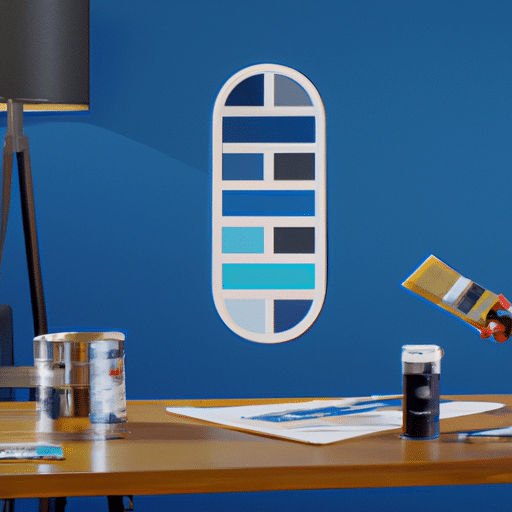The Art of Painting and Decorating
Transforming your living or working space can be as simple as applying a fresh coat of paint or as intricate as redecorating the entire area. Both painting and decorating are artistic processes that require thoughtful planning and implementation.
Defining Painting and Decorating
Painting and decorating encompasses a broad range of activities, from applying paint or wallpaper to your walls and ceilings, to choosing the right furniture, lighting, and accessories to complement your color scheme.
In the context of home or office improvement, painting refers to the process of applying color, typically in the form of paint, to your walls, ceilings, doors, and other surfaces. This can be done using various tools such as brushes, rollers, or spray equipment. The type of paint used can vary depending on the surface being painted and the desired finish.
Decorating, on the other hand, involves enhancing the aesthetic appeal of your space through the strategic placement of decor elements. This can include items such as furniture, curtains, rugs, artwork, lighting fixtures, and other accessories. The goal of decorating is to create a cohesive and visually pleasing environment that reflects your personal style and taste.
The Impact of Painting and Decorating on Your Space
A well-executed painting and decorating project can significantly enhance the look and feel of your space. Fresh paint can breathe new life into tired, outdated rooms, while thoughtful decorating can turn an impersonal area into a cozy, inviting space.
Moreover, painting and decorating can have practical benefits as well. For instance, light-colored paint can make a small room appear larger and brighter, while strategically placed decor can emphasize a room’s best features or distract from its less appealing aspects.
But perhaps the most important impact of painting and decorating is on your mood and well-being. The colors and decor you choose can influence your mood, productivity, and comfort. For instance, cool colors like blue and green are said to have a calming effect, making them a good choice for bedrooms or offices. On the other hand, warm colors like red and yellow can stimulate the senses, making them a great choice for living rooms or kitchens.
Undertaking a painting and decorating project can seem daunting, especially if you’re a beginner. But with the right planning, tools, and knowledge, you can transform your space into a place that reflects your personality and meets your needs. Check out our articles on 10 things you need to know before starting your painting project and the ultimate guide to choosing paint colors for your interior trim for more information and tips.
The Painting Process
A significant part of the painting and decorating process involves understanding paint types, choosing the right color, and following the necessary steps to ensure a successful painting project.
Understanding Paint Types
There are various types of paint in the market, each with its own characteristics and uses. Broadly, these can be divided into oil-based and water-based paints. Oil-based paints are durable and resistant to staining and wear, making them suitable for high-traffic areas or surfaces that require frequent cleaning. On the other hand, water-based paints, also known as latex paints, dry quickly, have less odor, and are easier to clean up with soap and water.
Another important distinction is between matte, eggshell, satin, semi-gloss, and high gloss finishes. The choice depends on the look you’re going for as well as the area you’re painting. High gloss paints, for example, are durable and easy to clean, making them ideal for kitchens, bathrooms, and trim. Matte paints have a non-reflective finish that hides imperfections, making them suitable for ceilings and low-traffic areas. For more information on paint types and their uses, this article provides a good starting point.
Choosing Your Paint Color
Selecting the right paint color can transform your space and set the mood. However, it’s not as simple as picking your favorite color. You need to consider the size of the room, the amount of natural light it gets, the color of your furniture and other elements, and the overall look you’re trying to achieve. If you’re unsure, it’s a good idea to start with a neutral palette and add color through furniture and accessories. You can also use color psychology to create a specific atmosphere. Check out our guide on choosing paint colors for your interior trim and our list of top interior home painting colors for 2023 for inspiration.
Steps for a Successful Painting Project
- Preparation: This is a crucial step that includes cleaning the surfaces to be painted, patching holes and cracks, sanding, and applying primer if necessary. Don’t rush this step, as the quality of the final result depends on it. Our article on how to pressure wash your house can help with the cleaning process.
- Painting: Start by cutting in the edges with a brush, then use a roller for the larger areas. Apply two or more coats if necessary, allowing the paint to dry completely between coats.
- Cleanup and disposal: Clean your brushes and rollers, and store leftover paint for future touch-ups. Dispose of any waste responsibly.
- Enjoy the results: Once everything is dry, move your furniture back in and enjoy your refreshed space.
Remember, painting is a project that requires time, patience, and attention to detail. For more tips on successful painting projects, take a look at our article 10 things you need to know before starting your painting project.
The Decorating Process
The decorating process, just like painting, is an art form. It involves choosing the right elements to enhance the aesthetics of your space. Let’s delve into the process and learn how you can transform your space effectively.
Understanding Interior Design Styles
Recognizing different interior design styles is the first step in the decorating process. Each style, ranging from modern to rustic, Scandinavian to bohemian, has its unique characteristics and elements. By understanding these styles, you can identify which resonates with your personal taste and fits your space the best.
Some of the popular styles include:
- Modern: Known for its simplicity, clean lines, and monochromatic palette.
- Rustic: Features natural elements like wood and stone, with a warm and cozy vibe.
- Scandinavian: A blend of textures and contrasts, often with a white base and minimalistic approach.
- Bohemian: Eclectic, with a mix of patterns, colors, and a laid-back vibe.
Choosing Your Decor Elements
The next step involves selecting the decor elements. These can range from furniture and lighting to art pieces and accessories. Each element should align with your chosen design style and work together to create a cohesive look. Remember, the key to successful decorating lies in balance. Avoid crowding your space with too many elements. Instead, focus on creating a harmonious blend that reflects your personal style and enhances the functionality of your space.
Steps for a Successful Decorating Project
Here are some steps to guide you through a successful decorating project:
- Define Your Style: Identify your preferred interior design style. This will set the tone for your decorating project.
- Plan Your Space: Assess your space, consider its functionality, and plan accordingly. Determine where each piece of furniture and decor will go.
- Choose Your Colors: Select a color scheme that complements your chosen style. Colors play a significant role in setting the mood of a space, so choose wisely.
- Select Your Decor Elements: Pick out furniture, lighting, rugs, curtains, and other decor elements that align with your style and color scheme.
- Arrange Your Elements: Arrange your decor elements in a way that is visually balanced and functional.
- Add Personal Touches: Don’t forget to add personal touches. These could be family photos, souvenirs, or anything else that makes your space feel like home.
- Review and Adjust: Take a step back and assess your space. Make necessary adjustments until you’re satisfied with the result.
Remember, decorating is a creative process. Don’t rush it. Take your time to explore different elements, play around with ideas, and create a space that truly reflects your style and personality. For more helpful tips on painting and decorating, check out our blog.
Painting and Decorating Tips
Transforming your space with painting and decorating can be an exciting task. However, it can also be overwhelming with the multitude of choices you have to make. Here, we provide some tips to help you navigate through the process and make informed decisions.
Tips for Choosing the Right Paint
When it comes to painting, it’s crucial to choose the right paint for your project. Here are some tips to guide you:
- Understand the different types of paint: Paints come in different types like latex, oil-based, and enamel, each with its own characteristics and uses. Before you start your painting project, familiarize yourself with these types to determine which is best suited for your needs.
- Choose a high-quality paint: While it may be tempting to opt for a cheaper option, high-quality paint will provide better coverage, longer-lasting results, and is often easier to clean. Check out our article on why quality paint is worth the price for more information.
- Consider the color: The color you choose can dramatically impact the feel and look of your space. Consider factors like the size of the room, the amount of natural light, and your personal preferences when deciding on a color. Our article on the top 7 interior home painting colors for 2023 may provide some inspiration.
- Try before you buy: Always test the paint color on a small area before committing to a large project. This will give you a better idea of how the color looks in different lighting conditions and against your room’s furnishings.
Tips for Choosing the Right Decor
Choosing the right decor can enhance the aesthetic appeal of your space and complement your paintwork. Here are some tips:
- Understand your style: Knowing your personal style can help narrow down your choices. Whether you prefer a modern, traditional, or eclectic look, understanding what styles you’re drawn to can guide your decor selection.
- Consider the scale: The size and scale of your decor should be in proportion to your space. Large furniture pieces can overwhelm a small room, while tiny decor items might get lost in a large space.
- Choose versatile pieces: Opt for decor pieces that are versatile and can easily be moved or repurposed around your home. This gives you more flexibility and allows for easy updates to your decor.
Tips for Mixing and Matching
Combining different colors, textures, and styles can create a unique and personalized space. Here are some tips for successful mixing and matching:
- Balance is key: While mixing and matching can add interest to your space, it’s important to maintain balance. Too many contrasting elements can make your space feel chaotic, while too many similar elements can make it feel monotonous.
- Stick to a color palette: Having a defined color palette can help tie your space together. Choose a few main colors and use them consistently throughout your space.
- Play with textures and patterns: Mixing different textures and patterns can add depth and interest to your space. However, ensure they complement rather than compete with each other.
Exploring the world of painting and decorating can be a rewarding endeavor, allowing you to express your personal style and transform your space. By considering these tips, you can navigate your painting and decorating project with confidence.
Common Mistakes in Painting and Decorating
In the world of painting and decorating, there are many potential pitfalls that can hinder the success of your project. Understanding these common mistakes can help you avoid them and ensure a smoother, more satisfying transformation of your space.
Mistakes to Avoid in Painting
When it comes to painting, certain errors can detract from the final result or even cause long-term issues. These may include:
- Skipping the Preparation: Preparation is key to a successful painting job. This includes cleaning the surfaces, sanding if necessary, and applying primer. Forgetting these steps can lead to uneven paint application and reduced durability. Check out our guide on the 10 things you need to know before starting your painting project for more details.
- Using Low-Quality Paint: Lower quality paint may seem like a cost-saving measure, but it often requires more coats and doesn’t last as long. Our expert provides insights on why quality paint is worth the price.
- Choosing the Wrong Paint Color: Be mindful of how colors can impact the feel of a room. Dark colors can make a room seem smaller, while lighter colors can open it up. For inspiration, take a look at the top 7 interior home painting colors for 2023.
- Ignoring the Weather: External factors like weather can impact the drying process and final outcome of your painting project. For example, painting exteriors in damp conditions can cause paint to blister. Avoid these exterior painting mistakes every homeowner should avoid.
Mistakes to Avoid in Decorating
Decorating errors can disrupt the harmony of your space and prevent it from reaching its full potential. Here are some common decorating mistakes to avoid:
- Cluttering the Space: While it’s important to personalize your space, too many items can make it feel cluttered and chaotic. Strive for a balance between personal items and open spaces.
- Ignoring Scale and Proportion: Furniture and decor should be proportionate to the room size and each other. A too-large sofa or a too-small rug can throw off the room’s balance.
- Overdoing Themes: Themes can help guide your decorating, but overdoing it can make a room feel gimmicky. Use themed pieces sparingly and mix them with neutral elements.
- Neglecting Lighting: Lighting plays a crucial role in setting the mood of a space. Make sure to incorporate a mix of ambient, task, and accent lighting.
By avoiding these common painting and decorating mistakes, you can ensure a successful transformation of your space. Remember, it’s your space to create, so don’t be afraid to experiment and make it uniquely yours. For more tips and advice on painting and decorating, visit our blog.
Hiring a Painting and Decorating Professional
The painting and decorating process can be both exciting and challenging. A professional can help you navigate these challenges and ensure that your project meets your expectations.
When to Hire a Professional
There are several instances when you might want to consider hiring a professional for your painting and decorating project:
- Complex Projects: If your project involves complex elements such as high ceilings, intricate designs, or historic preservation, a professional’s expertise can be invaluable.
- Time Constraints: If you have a tight deadline for the project, a professional can ensure that the work is completed on time and to a high standard.
- Quality Results: Professionals have the experience and knowledge to deliver quality results, enhancing the longevity and aesthetic appeal of your painting and decorating project.
- Health and Safety: Professional painters are trained in safety protocols for working in various conditions and using different equipment, reducing the risk of accidents.
To make an informed decision about when to hire a professional for your painting and decorating needs, you might find our articles on how often should you repaint your home and why? and 10 things you need to know before starting your painting project helpful.
What to Look for in a Professional
When hiring a professional for your painting and decorating project, consider the following:
- Experience and Expertise: Look for a professional with a strong track record in painting and decorating. Their portfolio should demonstrate their ability to handle projects similar to yours.
- Licenses and Certifications: Ensure the professional has the necessary licenses and certifications to carry out the work. This not only ensures they are qualified but also that they adhere to industry standards.
- Insurance: Make sure the professional is insured. This protects you from liability in case of any accidents or damage during the project.
- Reviews and References: Check reviews and ask for references to get an idea of the professional’s reliability, punctuality, and quality of work.
- Clear Estimates: The professional should provide a detailed estimate that includes the cost of materials, labor, and any additional charges. This helps to avoid any unexpected costs later on.
- Communication: Good communication is key to a successful project. The professional should be responsive, clear, and open to your ideas and concerns.
By taking the time to find the right professional for your painting and decorating project, you can ensure a smooth process and high-quality results. For more tips and advice on painting and decorating, check out our article on why quality paint is worth the price: an expert’s perspective.


